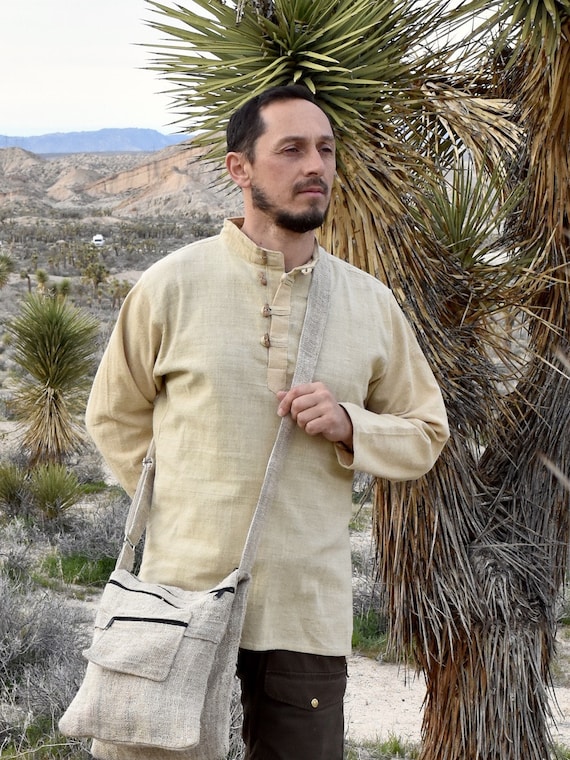Handy Info For Choosing Bamboo Clothing
Wiki Article
Why Is It That Hemp Is More Biodegradable, Durable And Renewable Than Cotton For Example?
Hemp is believed to be more biodegradable due its inherent qualities as well as the way it grows. Here's why- Biodegradability-
Natural Fiber Natural Fiber Hemp is made of the natural plant fibre that is biodegradable. Clothing and textiles from hemp naturally decompose after being thrown away. They then return to the environment, leaving no lasting leftovers. This is in contrast with synthetic fibres like polyamide, which can decompose over a period of hundreds of years.
Hemp textiles don't typically have chemical treatments or additives that could hinder biodegradability. Cotton textiles are treated with synthetic chemical additives like certain dyes or finishings that slow the biodegradation process.
Durability-
Hemp is known for its strength and durability. Hemp clothing and textiles are less susceptible to wear and tear and last longer in comparison to cotton-based products. The strength of hemp clothing means that it will withstand longer wear and washing cycles before it begins to deteriorate.
Hemp fabrics are less prone to pilling, which results in the formation of tiny, fuzzy balls on the fabric surface. This contributes to the longevity of their fabric and its overall quality.
Regenerative Agriculture-
Soil Health Hemp cultivating is an regenerative method when sustainable. Hemp has an extensive root system which can help keep soil from compaction and erosion as well as improve soil health by aerating the soil and enhancing the activity of microbial. This regenerative quality can make the land better suitable to future crops.
Low environmental impact Sustainable hemp cultivation methods require the use of a minimal amount of pesticides. Cotton farming, which relies on synthetic chemicals may result in soil degradation and water pollution.
Water Efficiency-
Hemp needs less water to development than cotton. The drought-resistant quality of hemp allows it to grow even in conditions of low water or rain. This makes it a more efficient use of water, particularly in areas that have limited water resources.
Hemp is a great crop to incorporate into rotational systems. This can help improve the health of soil as well as decrease the chance of disease growth and soil depletion. In cotton farming that is conventional, crop rotation is rarer.
Hemp is adaptable and can be used in a variety of ways, such as for clothing, textiles or even building materials. This flexibility implies that hemp cultivation could be used to support a variety of industries using sustainable and sustainable methods.
Although hemp has many advantages but it is essential to be aware that hemp and cotton could both be produced in a sustainable or unsustainable method, based on farming methods and processing techniques. The environmental benefits of hemp can be maximized by selecting products that have been produced in a sustainable manner and using eco-friendly methods. The use of organic cotton is also a way to reduce environmental concerns that are associated with traditional production. View the top continued for hemp clothes for website tips including organic hemp underwear, hemp button down shirt, hemp jacket, hemp shorts mens, hemp tank top, 100 hemp shirt, hemp shirts wholesale, hemp yoga pants, hemp shorts, hemp trousers and more.

How Can Hemp Fibers Benefit On Carbon Sequestration, Sustainability And Crop Rotation?
Carbon Sequestration:
Hemp has a rapid growth rate. It matures between 70 to 120 days based on the hemp type and the growing conditions. In their rapid growth phase, hemp absorbs carbon dioxide from the air through photosynthesis. This carbon uptake could aid in the sequestration of carbon dioxide and reduce levels of CO2 in atmosphere.
Hemp is a plant with a large biomass production. The tall stalks and dense leaves of the plant yield an abundance of organic matter. If this biomass is used in the soil for a variety of purposes, it can help to increase the amount of organic carbon.
Sustainability:
Hemp is grown with lesser chemicals than cotton or other crops. The hemp's natural resistance to many pests, diseases and weeds minimizes the need of chemical treatments. Particularly organic hemp farming is a focus on sustainable practices, since it doesn't use chemical pesticides.
Hemp is relatively water efficient and grows with minimal irrigation. This makes it a better crop in areas in which water resources are scarce. This is why it is more sustainable in regions that have limited water resources.
Hemp roots are long and may aid in improving soil quality. His roots can help prevent soil erosion through stabilizing soil structure and decreasing runoff. Hemp farming can increase soil microbial activity, increasing the fertility of soils and the cycle of nutrient.
Hemp can be incorporated into systems for crop rotation. Crop rotation is the process of alternating of various crops within the same field. This method helps break pest and disease cycles and reduce soil loss and improve soil structure. Hemp's contribution to crop rotation helps sustain farming practices.
Rotation of the crop
Hemp plants can be rotated with other crops including legumes, grains and vegetables. This can help farmers to maintain the quality of their soil and reduce the chance of pests, diseases, and other issues related to crops as well as promote a balanced process of nutrition.
The roots of hemp are deep and are able to penetrate soils and help aerate them and reduce compaction. This also improves the water infiltration. The better soil structure following the harvest of hemp benefits subsequent crop.
Summary- Hemp fibers are beneficial to soil quality, are suitable for crop rotation and can improve the carbon sequestration process and sustainability. They do this through the rapid growth of biomass, a low use of chemicals as well as their water efficiency and compatibility with crop rotation systems. Hemp farming is an ecologically sustainable practice in agriculture. The hemp fibers produced are eco-friendly and suitable for textiles, among many other applications. Have a look at the top rated hemp clothing for website examples including hemp button shirt, hemp clothing wholesale, women's all seasons hemp canvas bomber hoody jacket, hemp pants womens, hemp button shirt, hemp apparel, hemp clothing for men, hemp shorts patagonia, hoodlamb jacket, hemp jeans mens and more.

What are the differences between bamboo and hemp fibers?
Bamboo and hemp are plant-based fibres used to create textiles. Each has its own unique characteristic and properties. Here are some of the most significant differences between bamboo fiber and hemp fibre- 1. Plant Source-
Hemp- Hemp fibers are derived from the stalks of the hemp plant, and specifically the bast fibers that are in the outer layer. Hemp is a multi-purpose and rapid-growing plant that was used for a variety of purposes for centuries.
Bamboo fibers can be produced from the pulp that is produced by the bamboo plant. Bamboo is an extremely quick-growing grass that is known for its strength and speed of renewal.
2. Fiber Characteristics-
Hemp Fibers- Hemp's fibers are highly durable and strong. Hemp fibers are among the strongest natural fibers and become softer after washing which makes them ideal for durable textiles.
Bamboo- Bamboo is a soft, silky fiber. They may be less dense and less robust than hemp, but they are loved for their softness and comfort.
3. Texture and Feeling-
Hemp- Hemp fabric has the appearance of a coarse and rough feel, particularly in its natural state. It is extremely cozy, but it has a completely different texture from bamboo.
Bamboo is soft and silky smooth. It is often compared with silk, which is a blend of twill, which makes it very cozy.
4. Breathability & Moisture-Wicking-
Hemp Fibers Hemp fibers help to absorb water, are naturally and breathable. They can keep you cool and dry in hot temperatures.
Bamboo is also extremely breathable, and it wicks away moisture. The micro-gaps enhance the ability of bamboo fibers to regulate humidity and temperatures, making you feel at ease no matter the weather.
5. Environmental Impact-
Hemp- Hemp is considered an eco-friendly fiber because of its low water consumption quick growth rate, rapid growth, and resistance to pests, reducing the requirement for pesticides and herbicides. It can also absorb carbon dioxide from the atmosphere when it is growing.
Bamboo is known as a sustainable material. It grows quickly, needs only a small amount of water, and can be grown with no synthetic pesticides or herbicides. Certain varieties of bamboo are thought to be extremely sustainable, like Moso bamboo.
6. Processing-
Hemp- Hemp fibers must be extensively processed to separate the bast fibers from the core. The process may require Retting (decortication) or mechanical separation or Retting.
Bamboo- Bamboo Fibers can be obtained via a chemcial process known as the viscose/rayon procedure. The bamboo pulp is broken down using chemicals. Although this can cause environmental concerns when not managed responsibly, some bamboo textiles use closed-loop systems to reduce the amount of chemicals that are disposed.
7. Versatility-
Hemp- Hemp fibers are versatile and can be used in a range of applications, including paper, textiles, clothing construction materials, and many more.
Bamboo- Bamboo is typically used in the production of textiles and clothing. However, it could also appear in other products including towels and bed linen.
In the end, both hemp and bamboo offer unique qualities and sustainability advantages. The choice you make is based on your preference for the environment, and also what you want regarding specific properties and characteristics. Have a look at the recommended bamboo clothing for more tips including bamboo long sleeve shirt, bamboo sweater, bamboo womens shirts, bamboo sun hoody, bamboo trousers mens, bamboo newborn clothes, bamboo boxer shorts, bamboo pants, mens bamboo clothing, jacket bamboo and more.
